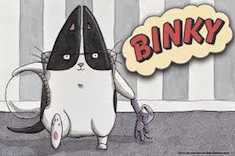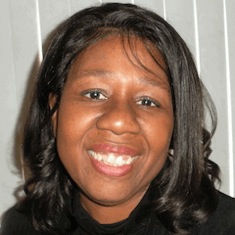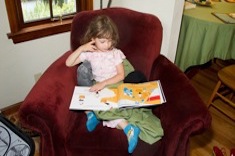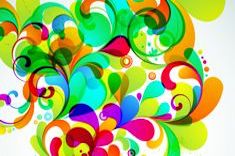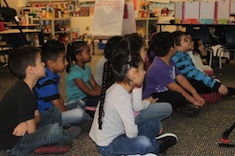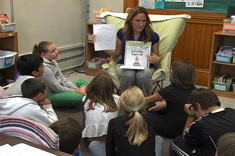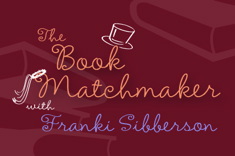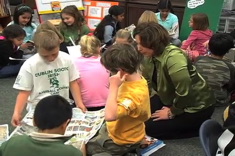“Whoa! Do we get to read this?” asked Malik, holding up a copy of the graphic novel Binky the Space Cat.
“No, sweetie,” replied Rochelle. “That book is for the red group.”
“That figures,” said Malik. “We only get to read lame books.” Rochelle’s eyes met mine. I got the message. One of the things on our to-do list would be to find some books for her group of struggling second-grade readers that weren’t lame.
I was visiting Rochelle during small-group instruction time to observe Malik’s group in action. Rochelle was very concerned about this group’s rate of progress. It was November of second grade and they were able to read only level E books. I watched the carefully planned lesson: the modeling of a reading strategy, an appropriate book introduction, each child reading the entire text, Rochelle scaffolding and supporting the children while they read, and a post-reading discussion. Everything looked good—except the looks on the children’s faces. They were passive, bored, and impatiently waiting for the lesson to finally be over.
The looks on the children’s faces in the red group were completely different. One of the children said that the character Binky reminded her of Scaredy Squirrel. Everyone excitedly agreed. They began talking all at once about how Binky was afraid to go out of the house and Scaredy Squirrel was afraid to leave the tree. They went back into their books in search of likenesses and differences. Then the timer rang for the next rotation and they all groaned. Rochelle promised them that they could continue to work on the comparison the next day and she would find multiple copies of Scaredy Squirrel. What a difference!
I asked Rochelle if Malik’s group could try reading Binky the Space Cat. When I peered over the children’s shoulders while they were reading, I saw pages with only a few speech bubbles containing some short phrases and text boxes containing a single sentence. Rochelle got a copy of the book and showed me a page depicting the letter that arrives with Binky’s spacesuit. It had some challenging words like announce, regulations, qualified, and documents. The children in Malik’s group would need a lot of help with those words. I suggested that we find some graphic novels appropriate for children reading at text level E. Rochelle asked, “Are there any graphic novels written at text level E?”
Yes, Rochelle, there are graphic novels written at text level E. I am sure that Malik will love them. The benefits of reading graphic novels for beginning readers include the following:
- They support the left-to-right sequence and return sweep of reading.
- They are supportive of diverse learners and ELs.
- They encourage inferences.
- They improve visual literacy.
- They allow readers to work from their current strengths in reading.
- They are empowering and encouraging.
- They are not lame.
Let’s get Malik’s group started reading some graphic novels.
Wordless Graphic Novels
These books would be great for introducing Malik’s group to graphic novels. Select a wordless graphic novel. The children can devote all of their attention and energy to learning the new format and structure without worrying about print processing. After the introductory lesson, fill the children’s book baggies with these titles.
Owly by Andy Runton
This book is one of a series featuring Owly, a lonely, kind owl trying hard to make friends.
Chicken and Cat by Sara Veron
Chicken and Cat are neighbors in an urban apartment building. Read more about their adventures in Chicken and Cat Clean Up.
The Adventures of Polo by Regis Faller
Polo is a dog who has a very exciting life. Equipped with a backpack filled with essentials, he goes off to explore new places. There are four more books featuring Polo.
Just-Right Graphic Novels for Malik’s Group
After they have had their lesson on the structure and format of graphic novels, the children can read and enjoy these titles:
Ball by Mary Sullivan
Okay, this book is actually easy for Malik’s group. The only word that appears in the book is ball. When the child leaves for school, the poor dog tries to get someone to play ball with him.
Laundry Day by Maurie J. Manning
This is a historical fiction story of a shoeshine boy who lives in what appears to be New York. He finds a red scarf that has fallen from a laundry line and goes from apartment to apartment trying to find the owner.
Robot, Go Bot! by Dana Meachan Rau
This book is described as a “comic reader” in the Step Into Reading series of beginning readers from Random House publishers. In this book, a little girl builds a robot and proceeds to give him one command after another.
Graphic Novels That Malik’s Group Will Be Reading Soon
One of the big obstacles that Rochelle must overcome with Malik’s group is motivation. Once they learn that reading is fun, by not reading lame books, I’m sure they will soar. Here are some graphic novel series that will be good next steps.
TOON Books is a publisher of easy-to-read comics and graphic novels. The company’s founders are Françoise Mouly and Art Spiegelman. Spiegelman is the author of the Pulitzer Prize–winning graphic novel Maus, A Survivor’s Tale (1980). Spiegelman says that “comics are a gateway drug to literacy.” TOON books are available at three levels:
- Level One is correlated to text levels E–J.
- Level Two is correlated to text levels G–K.
- Level Three is correlated to text levels K–P.
There are a dozen Level One TOON books. As an extra bonus for Rochelle and other teachers who’d like to get their hands on these books in a hurry, they are available online in digital form for free! The children have the choice of reading any of these books on their own or clicking on an option to have the book read to them.
Elephant and Piggie Books by Mo Willems
Mo Willems has written more than 25 books about best friends Gerald the elephant and Piggie the pig. These award-winning books appeal to readers beyond the beginning reader stage. Piggie’s words appear in a pink speech bubble and Elephant’s words appear in a gray speech bubble. Encourage repeated reading for fluency and sight-word building by using these books for readers’ theater.
Pigeon Books by Mo Willems
The talented Mo Willems has written another series of graphic novels for beginning readers. The Pigeon books feature Pigeon, an irresistible—yet persistent and demanding—protagonist. In each book, Pigeon wants something: a puppy, a hot dog, to drive a bus, to stay up late, and so on. He goes through a variety of strategies to persuade the reader to give him what he wants.
Reading-Writing Connection
One sure way to improve reading is through writing. Rochelle can engage Malik’s group in writing their own comics. Free comics printable templates are available at the following websites:
http://picklebums.com/free-printable-comic-book-templates/
www.printablepaper.net/category/comics
www.donnayoung.org/art/comics.htm

